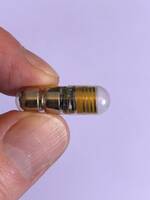
18 Nov Brigham/MIT/WVU Scientists Develop Pill to Measure Vital Signs Without Blood Tests or Wires
MedicalResearch.com Interview with:

Dr. Traverso
Giovanni Traverso MD PhD
Karl Van Tassel (1925) Career Development Professor
Department of Mechanical Engineering
Koch Institute of Integrative Cancer Research
Division of Gastroenterology
Brigham and Women’s Hospital
Harvard Medical School, Boston, MA, USA
MedicalResearch.com: What is the background for this study?
Response: I think its always important to acknowledge that this is a big team effort. We have the teams from MIT, Celero Systems, West Virgnia University (WVU) and Brigham and Women’s Hospital (BWH) all working together on this. For this study, Celero prototyped the devices that we tested in pre-clinical (Swine) models and in a first-in-human study with the team at WVU.
Our lab focuses on the development of ingestible devices for drug delivery and sensing and these have informed the development of these efforts as you can see.
MedicalResearch.com: What types of vital signs are measurable in this fashion?
Response: Heart rate and respiratory rate.
MedicalResearch.com: What are the main findings?
Response: Conventional polysomnography (PSG/laboratory sleep study) and home sleep studies require the patient to be attached to many different sensors. For the polysomnography, sensors are attached to the patient’s scalp, temples, chest and lungs with wires that are connected to a computer. For the home sleep study, the patient uses a nasal cannula, chest belt and pulse oximeter which are connected to a portable monitor. As you can imagine, trying to sleep with all of this machinery can be challenging. The Celero ingestible capsule just requires that the patient swallow the vitamin sized pill. It’s easy and unobtrusive and can accurately measure both respiratory rate and heart rate while the patient sleeps. In future work, Celero will have a residency mechanism that can keep the capsule in the patient’s stomach for a week, which would allow multi-night sleep evaluation.
MedicalResearch.com: What should readers take away from your report?
Response: We also hope that use of the Celero capsule will increase access to sleep evaluation. Access to PSGs is well-known to be limited for underserved communities. Being able to mail a Celero capsule to a patient could help to address this disparity.
The Celero capsule resides in the stomach in close proximity to the heart and the lungs where it can sense physiological movements in the body related to the heart beating and to breathing. The physiological information is stored in the ingested capsule which then uses wireless communication to relay the information to equipment outside the body, and from there to a cloud repository on the internet.
MedicalResearch.com: What recommendations do you have for future research as a results of this study?
Response: The team is working towards demonstration of automatic detection of opioid overdose and the autonomous delivery of medication in humans. We are very excited to bring this life saving technology to as many people that need it as soon as possible.
Disclosures: Dr. Traverso is a co-founder of Celero Systems and on the Board of Directors. Please refer to the manuscript for the complete disclosure statement.
Citation:
First In-human trial of an ingestible vitals-monitoring pillGiovanni Traverso, Victor Finomore, James Mahoney, Justin Kupec, Robert Stansbury, Daniel Bacher, Benjamin Pless, Shannon Schuetz, Alison Hayward, Robert Langer, Ali Rezai,
First-in-human trial of an ingestible vitals-monitoring pill,
Device,Volume 1, Issue 5,2023,100125,ISSN 2666-9986
https://doi.org/10.1016/j.device.2023.100125
———————–
Link to Video:
———————–
The information on MedicalResearch.com is provided for educational purposes only, and is in no way intended to diagnose, cure, or treat any medical or other condition.
Some links may be sponsored. Products are not endorsed.
Always seek the advice of your physician or other qualified health and ask your doctor any questions you may have regarding a medical condition. In addition to all other limitations and disclaimers in this agreement, service provider and its third party providers disclaim any liability or loss in connection with the content provided on this website.
